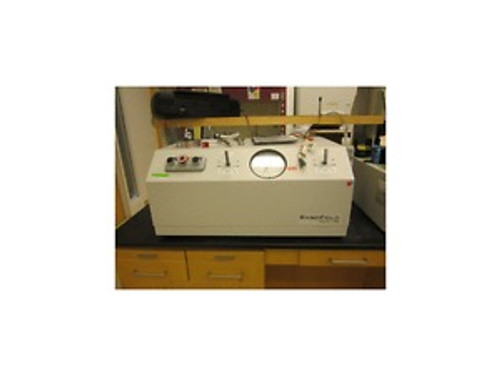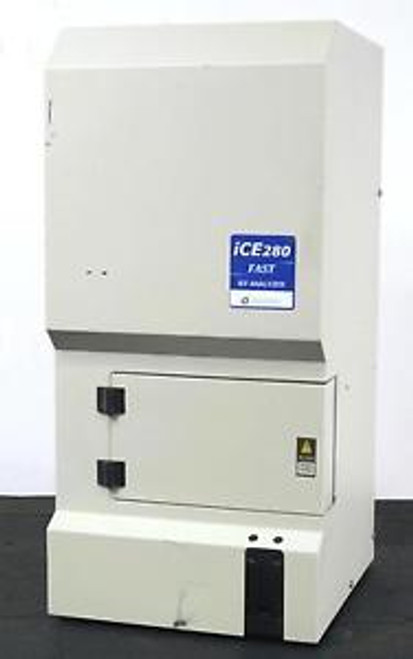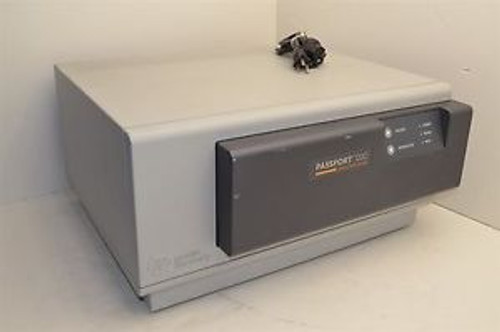HOW DOES JESS WORK?
Simple Western assays are automated, capillary-based immunoassays that solve many of the challenges that come with traditional Westerns. All assay steps from protein separation, immunoprobing, detection and analysis of data are fully automated. Variability in the manual processes that used to impact reproducibility, quantitation, time to result and overall data reliability is eliminated. Best of all, the transition is simple—the same antibodies you use for Western blotting protocols can be used with Simple Western assays.
Jess gives you four different ways to analyze proteins.
- Fluorescent detection: Why bother stripping and reprobing? Maximize your time and sample, and get the information you need in one shot, with multiplexing.
- Chemiluminescent detection: Working with low abundance targets or precious samples? Chemiluminescent detection gives you picogram-level sensitivity, letting you maximize the data you get from your sample.
- Protein normalization: Jess gives you an easy way to see if your samples contain a consistent protein load—just load her in-capillary protein normalization reagent into her assay plate and she'll take care of the rest. Her proprietary fluorescent reagent measures proteins immobilized in the same capillary as your immunoassay. The result? You can quickly see if your samples contain a consistent protein load, identify experimental setup and user errors, effectively normalize expression of your target protein to get accurate and consistent data, giving you the confidence you need in your results. Best of all, Jess's fluorescent detection capabilities enable two-color protein detection for multiplexing on top of protein normalization.
- Blot imaging: Still doing traditional Westerns? Snap! Get the picture with Jess's in-built blot imaging system.
Simple Western immunoassays take place in a capillary. Your sample, separation matrix, stacking matrix, antibodies and reagents are loaded automatically from a specially designed plate. Jess begins by aspirating the separation matrix and then the stacking matrix into each capillary. Next your sample is loaded, and capillaries are lowered to make contact with running buffer. Voltage is applied to enable separation by molecular weight. Once the separation is complete, UV light immobilizes the proteins to the capillary wall. With proteins now immobilized and the matrix cleared of the capillary, Jess starts the immunoprobing process, first with incubation with the primary antibody, followed by a secondary HRP conjugate, and finally chemiluminescent substrate. The chemiluminescent reaction is recorded by a CCD camera in a series of images over time. In just 3 hours you'll have quantitative, size-based data ready for analysis.
Her fluorescent detection capabilities enable two-color protein detection for multiplexing. During the immunoprobing process samples are incubated with the primary antibody, followed by infrared or near-infrared fluorescent secondary-tagged antibodies. Excitation of the fluorphores releases photons and the emission spectra is detected by wavelength sensors and recorded by a CCD camera in a series of images over time. In just 3 hours you'll have multiplexed, quantitative, size-based data ready for analysis.
Protein normalization has never been easier with Jess—just load her Protein Normalization Reagent into a row of wells on the plate, and she'll take care of the rest. The fluorescent-labeled reagent reacts with amines on proteins, enabling a between capillary comparison of protein load. Best of all, Jess's fluorescent detection capabilities enable two-color protein detection for multiplexing on top of protein normalization. Now, you can effectively normalize protein data, produce accurate and consistent data, and mitigate experimental setup and user error.
What does the data look like? At the end of your run, use the lane view option to compare band intensity or dive deep for fully quantitative analysis of protein size and concentration. Dive deeper into quantitative analysis to compare protein expression changes and analyze protein isoforms or size changes. Want to analyze expression changes between samples or compare runs? Our protein normalization will give you the confidence you need in your analysis.
| DESCRIPTION | TOTAL PROTEIN SPECIFICATION | CHEMILUMINESCENCE SPECIFICATION | FLUORESCENCE SPECIFICATION | PROTEIN NORMALIZATION SPECIFICATION |
|---|---|---|---|---|
| Sample Required | 0.3-1.2 µg | 0.6-1.2 µg | 2-4 µg | 0.6-4 µg |
| Volume Required | 3 µL/well | |||
| Size Range | Molecular weight (MW) ladder ranges from 2-440 kDa | |||
| Sizing CV | <10% | |||
| Intra-assay CV | <15% | |||
| Inter-assay CV | <20% | |||
| Resolution (± percent difference in MW) | ± 15-20% for MW <20 kDA ± 10% for MW >20 kDa | |||
| Quantitation CV | <20% | N/A | ||
| Dynamic Range | 2-3 logs | 3-4 logs | 3-4 logs | 2-3 logs |
| Sensitivity | ng | Low pg | High pg | ng |
| Capillary | 5 cm, 100 µm, 400 nL | |||
| Run time | <3 hours | <4 hours with immunoassay | ||
| Samples per run | 13 or 25 | |||
| Weight | 23 kg | |||
| Dimensions (closed) | 0.36 m H X 0.3 m W X 0.57 m D | |||
| Dimensions (open) | 0.36 m H x 0.53 m W x 0.57 m D | |||
| Power | US/CAN 120 V AC, 60 hz, 4.2 amps Europe 240 AC, 50 Hz, 2.1 amps Japan 100 AC, 50/60 Hz, 5.0 amps | |||
| Operating temperature | 18-24 °C | |||
| Operating humidity | 20-60% relative, non-condensing | |||






